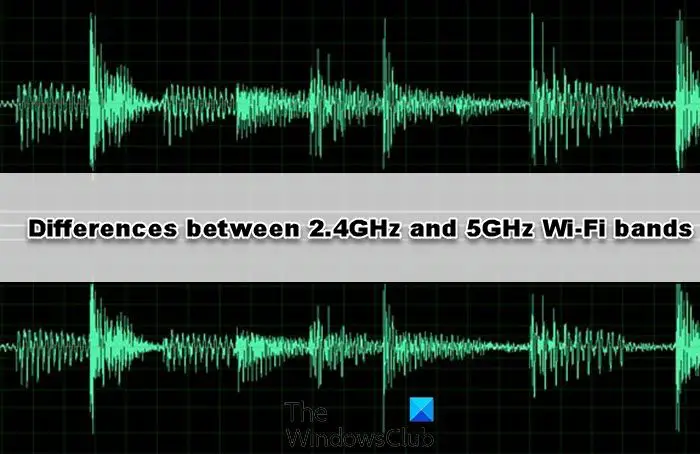The differences between 2.4GHz and 5GHz Wi-Fi
When it comes down to the main differences, the information below will aid you a great deal. So, keep reading to gain some knowledge.
2.4GHz Wi-Fi Band explained
OK, so the 2.4GHz contains 14 total channels. Each of these channels is around 22MHz wide, but not every country supports all 14 channels. When it comes down to speed, this frequency tops out at an impressive 450 megabits per second (Mbps). It can reach 600Mbps, but it all depends on the condition. The coverage with the 2.4GHz frequency band is quite wide, which means, you should be able to stay connected at longer distances.
5GHz Wi-Fi Band explained
People are going to enjoy the 5GHz frequency band because it has 24 non-overlapping channels. Each channel is only 20MHz wide, but despite that, the number of channels outweighs the size. In terms of speed, you can expect this band to support speeds up to 1Gbps. Great speed support, right? We agree, but most of the world lacks this super-fast internet connection. The higher transfer speed, while great, has a major drawback, which is less coverage compared to the 2.4GHz band. It’s more difficult for 5GHz to penetrate solid objects, therefore, you’ll need to be in an open space to better take advantage.
2.4GHz vs 5GHz frequency bands: Which is better?
From our point of view, neither is better. That’s because both have major pros and cons. If you want a more consistent internet connection at longer distances, then 2.4GHz is your best bet. It will work well enough with walls and in crowded areas. A 5GHz connection, on the other hand, delivers a faster internet connection but at a short distance from the router. So, if you intend to stream or play online video games, then 5GHz makes a lot of sense. Just ensure the video game system is sitting close to the router. Read: Check if your Windows laptop supports 2.4 GHz or 5 GHz.
What about 6GHz?
If you’ve managed to understand the differences between 2.4GHz and 5GHz, then it shouldn’t take much to get what 6GHz brings to the table. If you’re still having troubles, then let us break it down for you in the most basic terms. The 6GHz connection is much faster, but its coverage is smaller. So, as it stands, it appears as if dual-band routers that can simultaneously connect to all bands are the future. Read: How to switch between 2.4 GHz and 5 GHz Wi-Fi bands in Windows.
What is the main difference between 2.4GHz and 5GHz?
There are several primary differences between 5GHz and 2.4GHz. These differences are important, but they won’t be for every user. In fact, some of the things that make either frequency unique will take years to be widely used. Now, the main things to separate them are coverage and speed. We will talk more about that later.
Can I use both 2.4GHz and 5GHz at the same time?
Yes, you can do this. However, it all depends on the router you’re connecting to. If it is not a dual-band device capable of receiving and transmitting on both 2.4 GHz and 5 GHz frequencies at the same time, then it won’t work, unfortunately.
Is 5GHz the same as 5G?
This is a very good question. A lot of people believe both are one and the same, but that is not the case. 5GHz is a frequency used by Wi-Fi devices, while 5G merely means the fifth generation, and that’s all. Strangely, some routers display their 5GHz frequency support as 5G. This makes the matter even more confusing for consumers.

